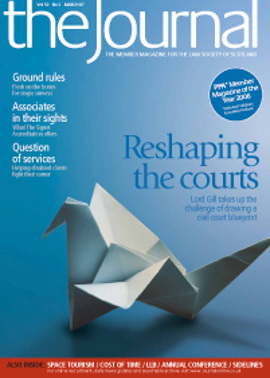Breaking down a brick wall?

The hot topic in agricultural circles is how to attract new (particularly young) entrants into farming. The problem is twofold: first, to persuade the “old guard” to retire and, secondly, to find ways of attracting new blood. Leaving aside the first problem, there are several barriers to attracting new, young, farmers, not least the costs of acquiring, equipping, stocking and capitalising farms and a shortage of available land.
Most aspirants to farming would wish to enter as tenants, for financial reasons and because it is less permanent than ownership. This route, however, is blocked for many by the rigidity of the Agricultural Holdings (Scotland) Act 2003 which, on the face of it, provides for short limited duration tenancies (SLDT) for a maximum of five years, or limited duration tenancies (LDT) for a minimum of 15 years, and nothing in between. In most cases SLDT will be too short, and LDT too long for either side, as a trial period. But are there, in fact, other options? I suggest there are ways of demolishing the brick wall, among them:
An agreement under s 8(1) of the 2003 Act. This permits termination of LDT by written agreement entered into after commencement, provided that compensation payable by each party to the other is specified. The agreement can be entered into, apparently, at any time after the tenancy commences and there is no bar to a future termination date. I do, however, wonder if an agreement formalised immediately after the tenancy commences with a view to terminating it many years hence would be cut down if it is, in fact, to implement an informal agreement made before commencement. I also wonder what realistic provision, other than in general terms, can be made for compensation when an agreement is not to take effect for some years.
A LDT which (as permitted by s 9(1)) makes advance provision for rent, including such a large hike at the intended end of the lease that it is a disincentive for the tenant to continue after that date. There is a risk, however, that such an arrangement would be challengeable on grounds of public policy and unfairness.
A “new” 1991 Act lease to a limited partnership dissolving after a fixed period (less than 15 years). Arguably notice is not required to dissolve a partnership for a fixed period and s 72(6) (general partner’s right to claim the tenancy) only kicks in where the partnership is dissolved by notice (or the tenancy is renounced or breached) by the limited partner. Even if this is incorrect and the general partner succeeds in claiming a s 72(6) tenancy, the landlord is at risk only to the extent that he may then terminate the tenancy under s 73, by use of the double-notice procedure. But remember that the general partner, whether as such or as tenant in his own right while s 73 is operating, can claim right to buy under Part 2.
I did, incidentally, consider use of a limited partnership lease in which the limited partner is not a legal person who is “a landlord who has a relevant interest” under s 70(7) or “a person who is an associate of a landlord” (s 70(8)), to avoid the operation of s 72. However this seems to be knocked on the head by the Land Court in Maxwell-Stuart’s Trustees and Douglas, 13 November 2006 (currently under appeal), in which the court appears to have applied the law of agency rather than a strict interpretation of the 2003 Act in determining whether a person is “an associate of the landlord”.A “rotation” of SLDTs – for example the landlord splits a holding into three, lets part 1 to A for five years, then moves A to part 2 for the next five years and part 3 for a further five, each time leaving the vacated parts for further new entrants to follow on. Such an arrangement seems possible under s 4(5) of the Act on the basis that at each changeover A moves to different land, but there are obvious practical problems, not least in relation to provision and maintenance of fixed equipment, and compensation for improvements and/or deterioration. And what if a particular tenant drops out or the landlord falls out with him mid-stream?
A lease/sub-lease arrangement under which, on termination of the lease, the sub-lease collapses. I suggest, however, that such an arrangement is used only where commercial circumstances demand it.
These are a few suggestions – I would be most grateful to hear of any which occur to others, but isn’t it crazy that we have to think laterally to find a way to enshrine what in most cases will be the wishes of both parties? The simple solution would be to recognise that the present legal framework is too rigid. Will this happen after the Scottish parliamentary election in May?
Alasdair G Fox WS, Anderson Strathern
In this issue
- A look in the mirror
- A welcome review
- Squaring the circle
- Profitability and financial structure
- Access-ability
- Culture change
- Practice? What practice?
- Signet badge takes wing
- Four in one
- Appreciation: Angus McLean
- In on the Acts
- "Lossiemouth, we have a problem"?
- Flagging up VAT
- In the family way
- Practice inside out
- Shape of things to come
- Breaking down a brick wall?
- Playing by the rules
- Scottish Solicitors' Discipline Tribunal
- Website reviews
- Book reviews
- Funny thing
- PIPs' hour approaches
- Enabled in the housing market
- Registers refresher






